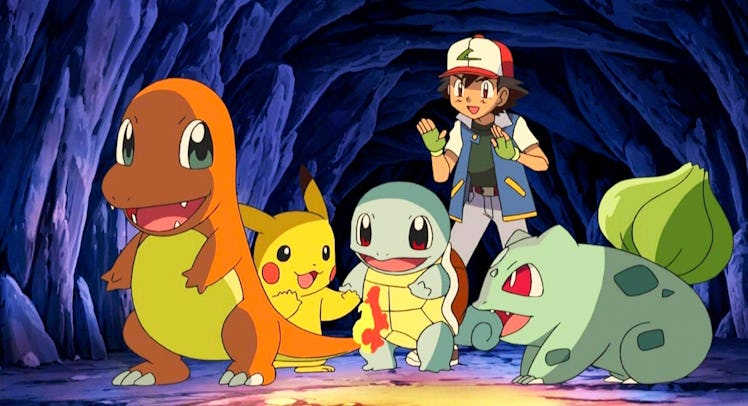Why Do Kids Love Pokémon? It Changes Their Brains.
New neurological research confirms that Pikachu may be messing with your kid's mind.

Children who play Pokémon may experience developmental changes to their brains, according to research out of Stanford University. The findings, published in the journal Nature Human Behavior, indicate that when kids are consistently exposed to images of Pokémon, a wrinkle in their visual cortex forms specifically to store memories of Bulbasaur, Squirtle, and Jigglypuff. The good news is that there’s no reason for parents to panic; Pokébrain might actually be a good thing.
The authors of the study were inspired to conduct the experiment by past neurological research on primates, which suggests that there are distinct regions of the brain that develop as a result of early, often, and consistent visual stimuli. Human studies similarly indicate that people have specific neurons that help them remember the faces of familiar celebrities. However, the research did not look at how these areas of the brain may start to form in children.
In order to test the hypothesis that children experience similar physical changes based on visual stimuli, study co-author Jesse Gomez, Ph.D., needed to identify images adults engaged with frequently as kids. He remembered playing Pokémon.
“What was unique about Pokémon is that there are hundreds of characters, and you have to know everything about them in order to play the game successfully. The game rewards you for individuating hundreds of these little, similar looking characters,” Gomez wrote in a statement. “I figured, ‘If you don’t get a region for that, then it’s never going to happen.’”
Gomez used functional magnetic resonance imaging (fMRI) technology to scan the brains of 11 adults — a notably small test group, it’s worth pointing out — who grew up playing Pokémon regularly and 11 adults who had never played as the control group. While hooked up to the fMRI, participants were shown images of faces, animals, cartoons, bodies, words, cars, corridors, and, of course, Pokémon. Not only did the Pokémon veterans respond more strongly to images of the Pokémon, but a consistent area of their brains seemed to be triggered by Pikachu.
The results do more than show that Pokémon exposure can be mind-altering to children. The study provides further evidence for what scientists refer to as “eccentricity bias” — the idea that the way people view images, through their central or peripheral vision, and the size of the images determine where brain wrinkles form in response. Put differently, Pokémon are associated with a particular part of the brain because they look similar, not because they are similar.
“Because Pokémon are very small and viewed with our central vision most of the time, they occupy a small portion in the central retina when we’re looking at them,” said Gomez. As stimuli expand, so does the area of the brain that stores it. “Faces are a bit bigger, so they occupy a slightly larger portion of the central retina. Scenes, as we navigate through them, are very large and extend all the way into our peripheral vision.”
Gomez’s former adviser and study co-author Kalanit Grill-Spector, Ph.D., a professor of psychology at Stanford, concurs. “I think one of the lessons from our study is that these brain regions that are activated by our central vision are particularly malleable to extensive experience,” she said.
But don’t worry about the Pokémon doing damage to children’s brains. Each of the Pokémon players in the study had a Ph.D.
This article was originally published on